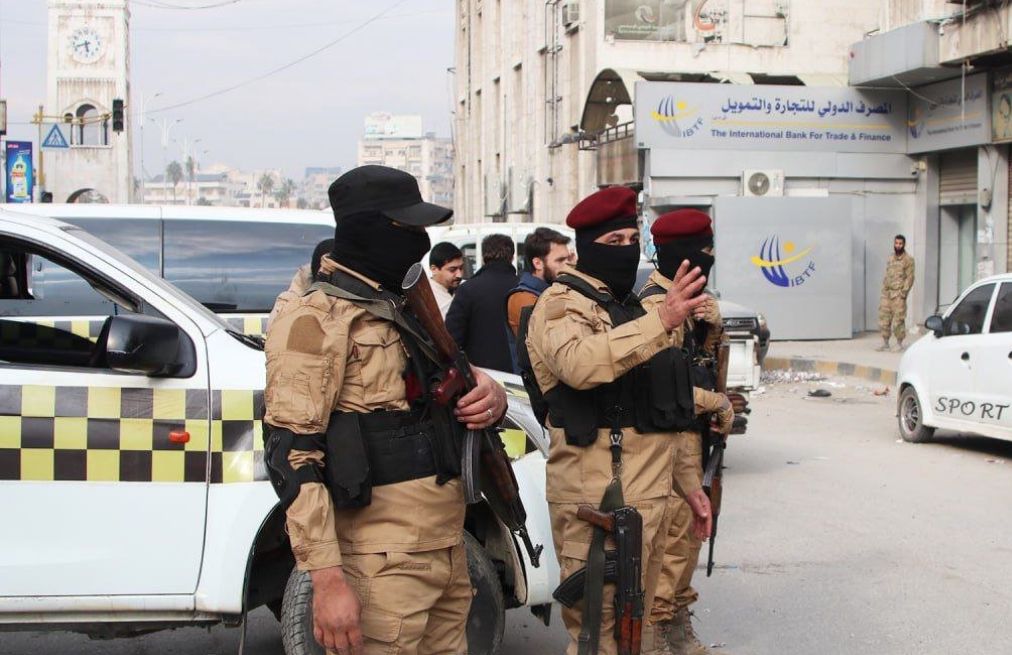By Nicolas Zupardo Dutra e Cinthya Araújo*
“Welcome back, Bashar Al-Assad,” was the headline of an article published by the German newspaper Deutsche Welle at the beginning of 2023, discussing the possibility of the Syrian dictator rejoining the international community after what some analysts classified as a victory in the civil war that has ravaged the country. However, recent events have drastically altered this paradigm, shocking much of the international community. In less than two weeks, rebel groups launched an offensive, marching into the heart of the country and capturing the capital, Damascus, thereby ending more than 50 years of Assad family rule. This effectively marked the conclusion of a chapter in the country’s history after 13 years of bloody conflict. Despite the euphoria surrounding the end of Bashar Al-Assad’s government, while it may be celebrated by millions of people both within Syria and abroad, it still leaves room to understand how this collapse happened so quickly and what its possible implications for the region might be.
THE REBEL OFFENSIVE

On 27 November, a coalition of rebel groups led by the jihadist group Hayat Tahrir Al-Sham (HTS), with involvement from Turkey-backed groups under the banner of the Syrian National Army (SNA), launched an offensive named Deterrence of Aggression against pro-government forces on the outskirts of Aleppo. Within days, this offensive resulted in the capture of Aleppo itself, the country’s second-largest city, followed by the fall of Hama and Homs. Combined with the resurgence of rebel groups in the south of the country, the offensive culminated in the capture of Damascus and Bashar Al-Assad’s flight to Moscow. The sudden collapse of the Assad government can be explained by three key factors: the gradual deterioration of the military position of pro-government forces, the strengthening of opposition forces – particularly through their institutionalisation – and an international paradigm favourable to the rebels, as the Syrian government’s primary allies were preoccupied with other global issues.
Firstly, it is essential to understand that, although pro-government forces possessed a significant numerical advantage over the opposition, and had embarked on an extensive programme of military reform and modernisation in recent years, analysts such as Gregory Waters and Muhsen Al-Mustafa identified several factors that resulted in the slow degradation of both cohesion and readiness within the Syrian Arab Army. Waters highlighted important factors such as the severe erosion of living standards for Syrian soldiers, extensive corruption within the Syrian armed forces – which saw soldiers’ wages diverted by officers – and a shortage of human resources caused by tens of thousands of troops being transferred to the reserves. This, combined with frequent reports of desertions, painted a critical picture of the Syrian army’s internal state, alienating the Alawite population, which dominates the military hierarchy and has historically been a key base of support for the regime. Additionally, an important aspect of the Syrian army’s reforms was its doctrinal shift regarding battlefield leadership, with officers leading from the rear. This resulted in commanders being absent from the battlefield during the offensive, rendering them unable to direct or coordinate their troops and thus facilitating the rebel advance.
It is also important to note that while a gradual degradation of pro-government forces has been observed, exacerbated by Syria’s economic collapse in recent years, the opposite trend has been seen within Syria’s opposition forces. Immediately after the conflict froze in March 2020, the jihadist group HTS initiated a series of reforms and restructurings that transformed the group from a jihadist militia into a paramilitary force with capabilities that analysts such as Aaron Zelin describe as “proto-military.” Currently, these “proto-military” characteristics include military academies, centralised command, specialised units employing and developing drones, and a local weapons and ammunition manufacturing industry – a surprising achievement for a former militia isolated in a small northern Syrian province.
This transformation has been spearheaded by HTS leader Abu Mohammed Al-Jolani, who, in recent years, has sought to absorb and unify various rebel groups in Idlib under the Military Operations Command, previously known as Fatah Al-Mubin, and shape them into a cohesive, unified force. This was achieved through the creation of military academies and training centres in Idlib, which established training programmes aimed at professionalising former insurgent groups dispersed across the province. Furthermore, it is noteworthy that the widespread adoption and development of drones, based on previous experimentation during the Syrian civil war, became a key tool for attack and reconnaissance. This large-scale adoption was made possible by the rebels producing drones in small workshops located in houses, garages, or repurposed warehouses, even resorting to 3D printers when they lacked access to parts. This provided rebel forces with a surprisingly effective capability for interdiction and attack against pro-government rear positions.
In this context, having examined the internal dynamics behind the rebel offensive, it is necessary to understand the international paradigm that enabled its success, as Assad’s primary allies – Iran and Russia – were distracted by other international concerns. In Iran’s case, Israeli airstrikes in Syria and Lebanon significantly degraded Iran’s posture and that of its proxies in the region. This was particularly evident among pro-government forces, which relied heavily on Shia militias supported, led, and armed by Iran’s Revolutionary Guard. These same militias played a crucial role in regime offensives in previous years, including in the defence of Aleppo and Hama during the rebel offensive. However, the degradation of these Iranian support networks likely made them far less effective than in previous years. In Russia’s case, its “special military operation” in Ukraine forced the country to reposition its forces in Syria, leaving its Syrian contingent with fewer aircraft, munitions, and pilots, which weakened its ability to respond to local crises. This dynamic left Syrian units, which had relied heavily on Russian support – particularly aerial support – for years, forced to undertake serious defensive efforts on their own.
When analysed collectively, these factors reveal a precarious situation for pro-government forces immediately before the rebel offensive began. However, one event that unfolded during the offensive significantly accelerated the collapse of the Assad government and may have implications for Syria’s future: the resurgence of rebel forces in the country’s south. While rebel forces advanced on Hama and Homs, the Syrian government opted to reinforce the front with politically reliable units such as the Republican Guard, the 25th and 4th Divisions, and Shia militias, while the area surrounding the capital was garrisoned with demoralised Sunni conscripts. However, after the fall of Hama, previously dormant rebel cells launched attacks against pro-government forces in Daraa province, causing a wave of desertions among Syrian government troops, including senior figures like Ahmed Al-Adwa, a former rebel commander who had been granted amnesty by the Assad government. These rebel groups coalesced under Al-Adwa’s leadership and, in the following days, advanced on Damascus, accelerating the fall of Bashar Al-Assad’s regime. Now that we have an overview of the events and developments behind this process, it is necessary to examine its consequences.
THE FUTURE OF SYRIA

Firstly, it must be emphasised that the events in Syria are still recent, with unpredictable developments ongoing. However, several critical issues with significant implications for the region must be addressed. Among these are the future of the post-Assad Syrian government and the possibility of continued conflict within the country. The primary issue is the future of the post-Assad Syrian government. HTS, which was the main force behind Assad’s downfall, originally constituted Syria’s local branch of Al-Qaeda under the name Al-Nusra in 2013, until a split from Al-Qaeda in 2016 and the formation of HTS in 2017. HTS remains designated as a terrorist organisation by numerous countries, including the United States, Russia, Turkey, and the European Union.
However, the HTS’s efforts in recent years to distance itself from its designation as a terrorist organisation are noticeable. Under Jolani’s leadership, HTS has moved away from global jihadism and organisations such as Al-Qaeda, even eliminating Al-Qaeda cells in its territory. Jolani has sought to project a Syrian nationalist orientation, presenting himself as an actor capable of local governance, providing security, and pragmatically engaging with neighbouring countries. This effort to distance itself from a not-so-distant terrorist past has become clearer with the focus of Syria’s civil administration on the peaceful transition of power.
This local governance has taken the form of the establishment of the Syrian Salvation Government, a technocratic civil administration in HTS-controlled areas. Jolani’s attempt to establish bureaucratic institutions within his region aims to manage and administer resources efficiently. The Salvation Government is now the main group behind the newly established Syrian transitional government, tasked with restoring and reforming public institutions, with a transition deadline set for 1 March 2025.
It must be emphasised, however, that HTS still holds jihadist inclinations and rejects concepts such as liberal democracy, with institutions in Idlib taking on an authoritarian character. This raises questions about the nature of Syria’s government after the transition period, particularly concerning Jolani’s promises of pragmatism.
Furthermore, the possibility of internal conflict in Syria remains, even after Assad’s removal, due to the large number of armed groups in the country and the fragile position of the transitional government. There is a risk of fractures within the rebel coalition, particularly between figures like Jolani and Al-Adwa. Despite recent dialogues and meetings between the two leaders regarding the establishment of a unified military command, tensions persist. Additionally, tensions remain high in northern Syria, particularly concerning the Syrian Democratic Forces (SDF), which pose potential risks to Syria’s stability.
The SDF, a coalition of largely Kurdish autonomous militias, gained international prominence for their fight against ISIS. However, the SDF faces pressure on two fronts. The first comes from Turkey and its proxies in Syria, the Syrian National Army, who fear that an autonomous Kurdish militia controlling significant territory could provide shelter for Kurdish insurgent groups in Turkey, such as the PKK. This has led Turkey and the SNA to engage in military offensives against the SDF, including, in recent weeks, the capture of Manbij and Tel Rifaat from the SDF during heavy fighting as Assad’s government collapsed. Additionally, the SDF faces internal friction between its Kurdish leadership and Arab groups within its ranks. These Arab groups, initially absorbed into the Kurdish militia during the fight against ISIS, accepted Kurdish control at the time as preferable to Assad’s rule, the only viable alternative. However, with the emergence of a new government in Damascus, protests against SDF presence have occurred in Arab territories, culminating in the militia’s withdrawal from Deir ez-Zor and tensions over control of Raqqa.
Currently, negotiations between the new transitional government in Damascus, the Syrian Democratic Forces, and Turkey are ongoing regarding the status of the militia in Syria’s future. As of the writing of this article, 12 December, it remains difficult to predict what will happen in the coming months. Simply put, after this analysis, it is clear that Syria stands at a historic crossroads, with a challenging path ahead to heal the many wounds inflicted on the country over 13 years of internal conflict. The Assad family’s rule has left its mark on Syria’s history, and with this chapter closed, the hope is that the next ones will be written with less bloodshed.
*Nicolas Zupardo Dutra, undergraduate in International Relations at the Federal University of Paraíba (UFPB), member of the Research Group on Strategic Studies and International Security (GEESI-UFPB).
** This article is based on information obtained up to December 12th.
REFERENCES
https://syriarevisited.substack.com/p/the-slow-collapse-of-the-syrian-army
https://carnegieendowment.org/middle-east/diwan/2024/12/anatomy-of-a-military-fall?lang=en
https://www.ft.com/content/aaa80cd0-d75e-41cf-811d-20e6ecd230f8
https://www.ft.com/content/7f1f2cfe-9811-471e-85ec-30ceda4140a4
https://www.bbc.com/news/articles/ckg9z3r2xp9o.amp
https://syriadirect.org/what-was-behind-daraas-rapid-fall-and-did-hts-participate/
https://carnegieendowment.org/middle-east/diwan/2024/12/eastern-syria-after-assad?lang=en



